#African American Modernist
Photo
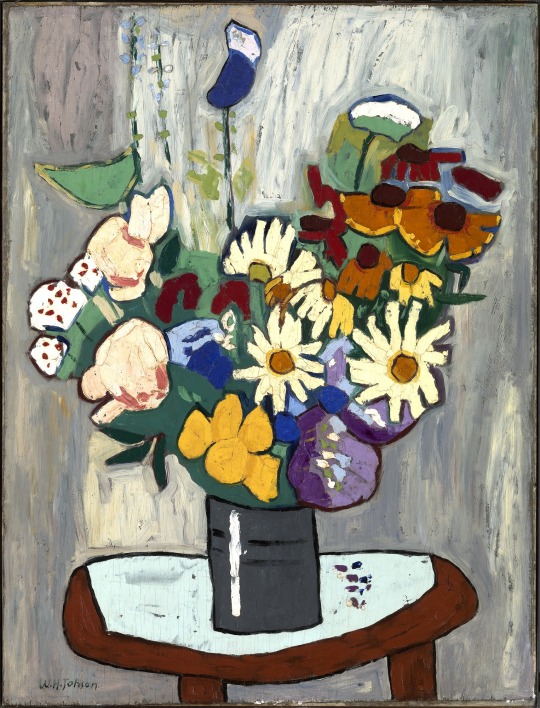
William H. Johnson, Flowers, 1939-1940, oil on plywood
8 notes
·
View notes
Text
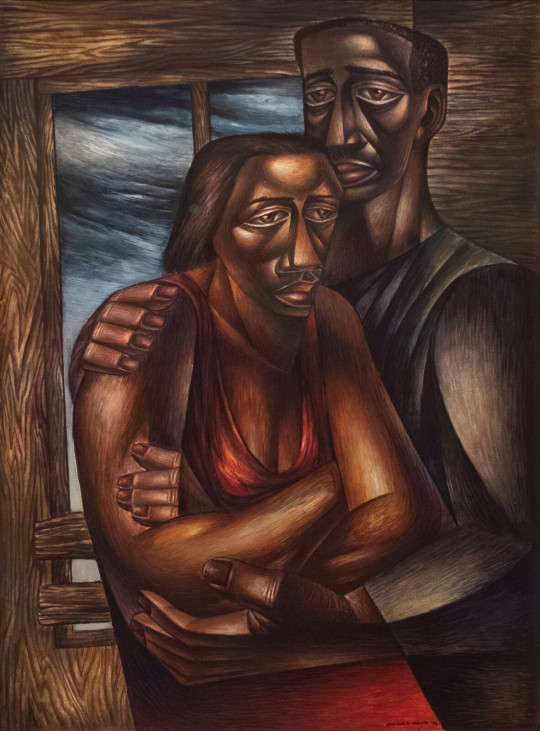
Charles White
Two Alone, 1946
Oil on board.
#black history month#black history#charles white#art#modernist art#african american artist#black art#oil on board#oil painting#painting
20 notes
·
View notes
Text

Lava Bracelet, 1946 | Art Smith
#jewelry#modernist jewelry#art smith#art#silver jewelry#bracelet#african american artists#modernist art
73 notes
·
View notes
Text
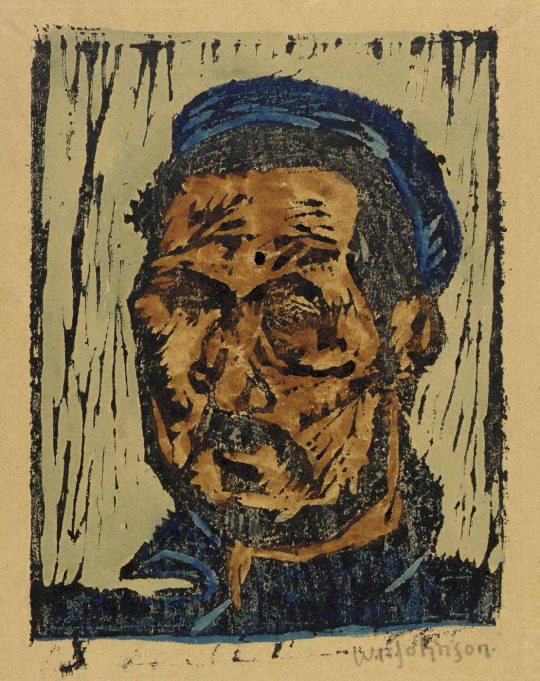
William Henry Johnson
Self-portrait
c. 1930-1945
#william h johnson#american painter#self portrait#american artist#african american art#black artist#black painters#modernism#modernist#expressionism#expressionist#expressionist art#modern art#art history#aesthetictumblr#tumblraesthetic#tumblrpic#american art#tumblrpictures#tumblr art#tumblrstyle#artists on tumblr#aesthetic#art aesthetic
18 notes
·
View notes
Text
Black on Both Sides: A Racial History of Trans Identity by C. Riley Snorton

The story of Christine Jorgensen, America’s first prominent transsexual, famously narrated trans embodiment in the postwar era. Her celebrity, however, has obscured other mid-century trans narratives—ones lived by African Americans such as Lucy Hicks Anderson and James McHarris. Their erasure from trans history masks the profound ways race has figured prominently in the construction and representation of transgender subjects. In Black on Both Sides, C. Riley Snorton identifies multiple intersections between blackness and transness from the mid-nineteenth century to present-day anti-black and anti-trans legislation and violence.
Drawing on a deep and varied archive of materials—early sexological texts, fugitive slave narratives, Afro-modernist literature, sensationalist journalism, Hollywood films—Snorton attends to how slavery and the production of racialized gender provided the foundations for an understanding of gender as mutable. In tracing the twinned genealogies of blackness and transness, Snorton follows multiple trajectories, from the medical experiments conducted on enslaved black women by J. Marion Sims, the “father of American gynecology,” to the negation of blackness that makes transnormativity possible.
Revealing instances of personal sovereignty among blacks living in the antebellum North that were mapped in terms of “cross dressing” and canonical black literary works that express black men’s access to the “female within,” Black on Both Sides concludes with a reading of the fate of Phillip DeVine, who was murdered alongside Brandon Teena in 1993, a fact omitted from the film Boys Don’t Cry out of narrative convenience. Reconstructing these theoretical and historical trajectories furthers our imaginative capacities to conceive more livable black and trans worlds.
#black on both sides#black on both sides: a racial history of trans identity#c. riley snorton#transfem#transmasc#trans book of the day#trans books#queer books#bookblr#booklr
74 notes
·
View notes
Text
Queer Classics
Some queer classics that are great to read.
"Giovanni's Room" by James Baldwin (1956) - This novel explores the story of an American man living in 1950s Paris who grapples with his own sexual identity and his relationship with an Italian bartender named Giovanni.
"Orlando" by Virginia Woolf (1928) - This novel follows the life of the titular character, who changes gender and lives for centuries, exploring themes of gender, identity, and time.
"The Picture of Dorian Gray" by Oscar Wilde (1890) - The story revolves around a young man named Dorian Gray, whose portrait ages while he remains youthful, as he becomes entangled in a life of hedonism and moral decay.
"Maurice" by E.M. Forster (1914) - This novel tells the story of Maurice Hall and his experiences as a gay man in early 20th-century England, including his relationships and struggles with societal norms.
"Carmilla" by J. Sheridan Le Fanu (1872) - A gothic novella featuring a female vampire, Carmilla, and the mysterious, intimate relationship she forms with the story's female protagonist, Laura.
"The Well of Loneliness" by Radclyffe Hall (1928) - The novel follows the life of Stephen Gordon, a lesbian in early 20th-century England, and her struggles to find acceptance and love.
"Patience and Sarah" by Isabel Miller (1969) - Set in the 19th century, this novel tells the love story of two women, Patience and Sarah, as they navigate societal expectations and build a life together.
"The Color Purple" by Alice Walker (1982) - The novel explores the life of Celie, an African American woman in the early 20th century, and her deep emotional connections with other women, particularly Shug Avery.
"Nightwood" by Djuna Barnes (1936) - A modernist novel focusing on the complex relationships of its characters, including a woman named Robin Vote who challenges traditional gender and sexual norms.
"The City and the Pillar" by Gore Vidal (1948) - This novel tells the story of Jim Willard, who explores his homosexual identity and relationships while facing the social constraints of the mid-20th century.

#queerbooks#classics#oscarwilde#writing#creative writing#writers block#writing advice#reading#books#word weaving#lgbtq community#classicbooks#queerlove#transbooks#words words words#writing community#writeblr#beautiful words#quote#books & libraries#booklr#books and reading#currently reading#bookworm#book recommendations
80 notes
·
View notes
Text
Black on Both Sides: A Racial History of Trans Identity by C. Riley Snorton
goodreads

The story of Christine Jorgensen, America’s first prominent transsexual, famously narrated trans embodiment in the postwar era. Her celebrity, however, has obscured other mid-century trans narratives—ones lived by African Americans such as Lucy Hicks Anderson and James McHarris. Their erasure from trans history masks the profound ways race has figured prominently in the construction and representation of transgender subjects. In Black on Both Sides, C. Riley Snorton identifies multiple intersections between blackness and transness from the mid-nineteenth century to present-day anti-black and anti-trans legislation and violence.
Drawing on a deep and varied archive of materials—early sexological texts, fugitive slave narratives, Afro-modernist literature, sensationalist journalism, Hollywood films—Snorton attends to how slavery and the production of racialized gender provided the foundations for an understanding of gender as mutable. In tracing the twinned genealogies of blackness and transness, Snorton follows multiple trajectories, from the medical experiments conducted on enslaved black women by J. Marion Sims, the “father of American gynecology,” to the negation of blackness that makes transnormativity possible.
Revealing instances of personal sovereignty among blacks living in the antebellum North that were mapped in terms of “cross dressing” and canonical black literary works that express black men’s access to the “female within,” Black on Both Sides concludes with a reading of the fate of Phillip DeVine, who was murdered alongside Brandon Teena in 1993, a fact omitted from the film Boys Don’t Cry out of narrative convenience. Reconstructing these theoretical and historical trajectories furthers our imaginative capacities to conceive more livable black and trans worlds.
Mod opinion: I haven't read this book yet, but it sounds very interesting and is on my tbr.
#black on both sides#black on both sides a racial history of trans identity#c. riley snorton#polls#trans lit#trans literature#trans books#lgbt lit#lgbt literature#lgbt books#nonfiction#history#trans studies#to read
18 notes
·
View notes
Text

THE FRIDAY PIC is a pair of small bronzes by Richmond Barthé: Feral Benga (1935) and Stevedore (1937) from the little survey at Michael Rosenfeld in New York.
I wrote about the show (and two others) in today's New York Times. (See the text of my Barthé piece, below).
In the Times, I argued that Barthé's work should be seen as a kind of 3D photography, presenting Black people as a "normal" part of the everyday, contemporary reality of prewar America, not needing to be dressed up in the stylish (and often primitivizing) trappings of modernist art. (Or in any of the other stereotypes African Americans were forced to embody.) What I didn't have room to point out (or claim) was that Barthé, a gay man, maybe does the same with his homoerotic images, which also normalize, maybe even naturalize, gay desire and its objects. Only a high-realist style, aligned with the illusionism of photography, had the power to do that.
And here's what I wrote about Barthé in the Times (go to the whole article to read my other two brief reviews):
Richmond Barthé, the great African American sculptor, gets kudos for his realism, but that’s faint praise that damns him: In the 1930s, when his career took off, there were hundreds of artists who had as fine a technique; there are still lots in Times Square, sculpting tourists’ faces in clay.
Looking at the 16 busts and figures in the Barthé survey at Rosenfeld — it’s curated by the British artist Isaac Julien, who has a stunning video in the Whitney Biennial — I realized that it’s best to ignore technique and to think of them as three-dimensional photographs, or as much as you possibly could before the age of 3-D scanners. The sculptures look forward to our technology, not backward at traditional realism.
The best of Barthés’s figures make his Black sitters as directly available as possible to our eyes, the way a photo seems to. There’s no interfering dose of modernist style, which was imbued with stereotypes about Blackness and “primitive” African art that invoked ideas of the “savage” and the “primeval,” or, calling on an opposite set of clichés, of the “Edenic” and “authentic.” Those were applied to African Americans in Barthé’s era, forcing them into cultural pigeonholes.
He gives his subjects more room to breathe.
“African Woman,” from 1935, shows someone whose hairdo may distance her from 1930s America, but she’s not exotic or ancestral. She’s another person of today who happens to come from far away.
The male head in “The Negro Looks Ahead” enacts its title by just being there and looking out onto the world.
Three portraits of Black boys are just three children waiting to grow up, into a world they still imagine might treat them fairly.
5 notes
·
View notes
Photo









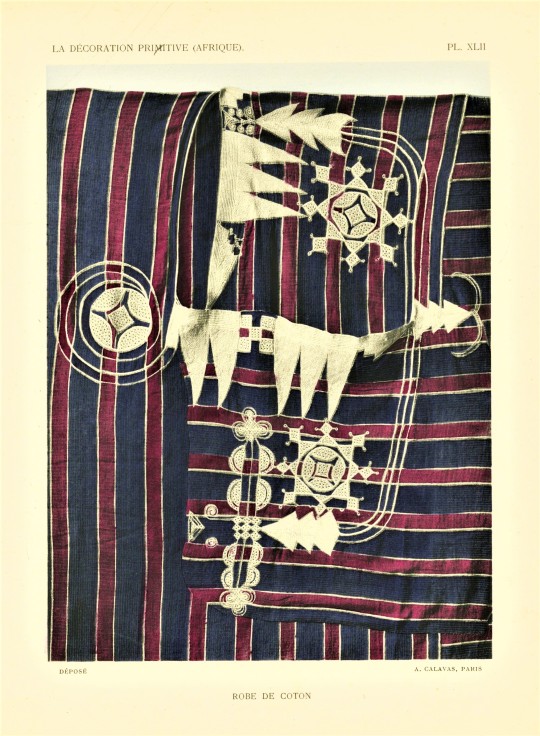
Decorative Sunday
This week’s plates are from the first volume of La Décoration Primitive, a collection of portfolios documenting the decorative art of Africa, Oceania, and the Americas (the last in two volumes, separated by pre- and post-Columbian). The four volumes were published in Paris by the photography and decorative arts publisher A. Calavas for Librarie des Arts Décoratifs, likely in 1922. The art critic and theorist Rosalind Krauss postulated that these volumes, along with Calavas’s other publishing for Librarie des Arts Décoratifs, were “published specifically for the instruction of arts and design students” in her 1985 work The Originality of the Avant-Garde and Other Modernist Myths.
While the Oceania and two American volumes contain introductory texts by Daniel Réal, a painter and curator at the Musée d'Ethnographie du Trocadéro, the text of La Décoration Primitive Afrique is by P.-C. Lepage. Lepage opens his introduction by addressing the use of the term “primitive,” insisting it is not used pejoratively. Indeed, “primitive art” was the most pervasive term used to describe non-Western art at the beginning of the 20th century. The term has declined in use as more of the art world has recognized the explicitly derogatory connotations. The rest of Lapage’s introductory text goes on to extoll the richness of the artistic tradition of the African continent, and laments the “disastrous influence” of les blanches in Africa, first by destroying “tout ce qui était à portée de leur ardeur iconoclaste (everything within reach of their iconoclastic ardor).”
-Olivia Hickner, Special Collections Graduate Intern
#Decorative Sunday#decorative plates#decorative arts#La Décoration Primitive#La Décoration Primitive Afrique#African art#African decorative art#A. Calavas#Librarie des Arts Décoratifs#Daniel Réal#P.-C. Lepage#Rosalind Krauss#Olivia
27 notes
·
View notes
Text
Afrofuturism : Postmodernisms in Art

Cover Artist : Samuel Spratt - SHURI (2018) #1 -Oct 17
Created by artist Leonardo Romero this art piece is designed by cover artist Samuel Spratt. SHURI is a marvel character representing Afrofuturism, a type of postmodern artform. AFROFUTURISM is an artistic and philosophical movement that focuses on African and African American art that involves tech, fiction and imaginative futures. The modernist view is patriarchal and racist, dominated by white heterosexual men. Postmodernism relates to cultural identity. Afrofuturism is a postmodern articulation of race that addresses blackness in this post-racial, political, and cultural moment. There are some postmodernisms that link Afrofuturism.

Hybridizing. Postmodern art is a mixing media and a layering of codes or constructs that create identities while working collaboratively. The Afrofuturistic character creation for this cover involves the artist and the designer with digital layering. The character has a hybrid identity in Afrofuturism as she represents now and the future. Representation is important so that the character can reflect the diverse society. Afrofuturism provides the outlet for reimaging black characters.

Creating Metaphors. Popular culture is a source of inspiration to create meaning as postmodern art. The afrofuturistic art represents womanism that demands value, dignity, and equality of black women without white cultural norms. Postmodern art is anti-authoritarian by nature. She is a highly intuitive, tech savvy, princess warrior in touch with her own femininity.

Using Narratives. Postmodernism has helped set the stage for artists to tell the tale of black women. African art, philosophy, and culture is connected to the narrative of the character as she is linked to a people, place, and idea throughout time and the universe. The aesthetic of the art portrays the sci-fi, futuristic setting of afrofuturism.

Andria Jones
Philosophy of Art

REFERENCES
Shuri (2018) #1 | Comic Issues | Marvel
The Black Panther as Afrofuturist Womanist Vision - The Front Porch
youtube
12 notes
·
View notes
Note
St;aring at u... curie headcanons?? Curie headcanons??? Spare headcanons??
:-)curie.... <3 curie curie curie THANK U for asking i SHALL provide
mention of substance abuse under cut but thats expected
manya "curie" ...
• ...i dont think they could remember their own last name if you asked, honestly.
• russian/african american mixed
• they/it and zey/xem pronouns, but gender is ??? it goes "sure" to whatever. lesbian tho
• wanted to be a classical oil painter and ran with the fantasy - just barely got in a liberal arts college until zey had to drop out, both due to lack of funds and being burnt out
• bad grades in high school too, struggled to get an education
• being a Teen Alcoholic didnt help at all but nobody offered help to them so!
• most likely still running from student debt. running from a couple of other crimes, too. theyre too silly for "fines" or "jail time"
• only got a job as a curator due to luck, having maaaybe stretched the truth about graduating from college
• xey kinda regret it now because of the type of art xey have to deal with is literally Xeir Least Favorite. contemporary modernist artists are the bane of their existence
• but ermm whatever pays the bills!
• when its not doing herion, it hosts paint and sip classes in a rented studio. god, not its apartment, thats a wreck
• usually has nude models but if zey cant afford one for the week zey just use zemselves lol
• one of curies friends suggested they be a painting therapist, and visibily shuddered at the thought of it before taking a long drink from their bottle. Nah
• has a hard time keeping friends but surprisingly hits it off well with karen (after she chewed it out for hitting on gingi, which they barely remember)
• their lifestyle fucking baffles karen which only makes her more intrigued. curie is such a useless animal
• karen has shown up to their paint and sip sessions before, which always delights curie because they always forget they invited her. every time. rinse and repeat
• curies offered various substances to karen to just "hang out and try", forgetting most that zey offer are illegal
• zey have hotboxxed with oliver once though that was fun
• travels around the state for different venues but comes back to dialtown alot because their gallery is empty and had lower standards
• has several (almost comical) connections due to this
#i keep crafting headcanons for characters and forgetting they have like#5 minutes of screentime IF that#henrys rambles#dialtown#curie
12 notes
·
View notes
Text
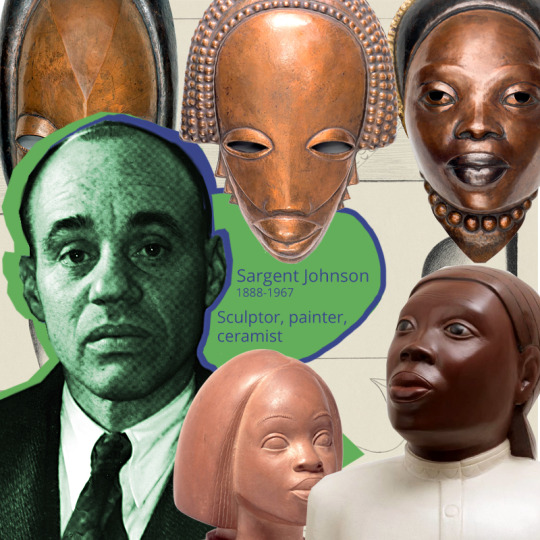
Sargent Claude Johnson is hard to categorize. He worked with so many mediums. Oil, stone, clay, watercolor... and more.
He is probably best known for his ceramic and sculpture works, his masks and figures in the round.
The third of 6 children, he was a mixed race man. His father of Swedish ancestry and his mother of Black-Indigenous ancestry.
Both of his parents would die before he was an adult.
He and his siblings would move to live with their aunt and uncle in Washington DC.
His aunt, May Howard Jackson, was a skilled sculptor working largely in portraiture and a prominent figure in DC's black intellectual culture. Her work must have influenced and inspired Sargent. But, he was not there long.
His brothers and himself were sent to an Orphanage while his sisters went to a Catholic School for racialized peoples.
What happened between then and the beginning of his career as an artist, isn't known. What is known, is in 1915, he moved to the Bay Area, married and began attending the A.W. Best school of Art, all in the same year.
He would also attend the San Francisco Art Institute then called the California School of Fine Art.
His first show was with the Harmon Foundation, and he was met with success, even winning the $150 prize for the best work. But he would win many more awards garnering national attention.
At this time, he was primarily showing his ceramics works.
In the 1930's he hit his creative stride. He began to push the stylization in his work even further and began to explore other mediums including wood, copper, etchings, drawings, terra cotta, and porcelain. He also received several large commissions from the WPA Federal Art Project. One an 18 by 24 foot carved relief organ screen, the other the interior of the Maritime Museum and Aquatic Park in San Francisco.
For the Golden Gate International Exposition (1939) he completed two massive 8 foot cast stone sculptures of Incas riding atop llamas.
He did many more projects, his animal series, cast in terrazzo and his other large works for exhibition.
Toward the end of his life, his works became very abstract. Yet, they always retained his signature simplicity.
He separated from his wife in 1936, their daughter also going to live with her. But despite their separation, they remained on good terms until her death. His work, always heavily influenced by his wife and daughter.
Sargent has suffered from angina, and settled in a hotel in downtown San Francisco in 1965. He would die there of a heart attack in 1967.
Sargent Johnson was an artist that never stopped exploring his work, truly embodying the craft as having no peak. His work was inspired by many different artists and styles, blended through him into something truly unique and special.
If you'd like to learn more about Sargent Johnson:
Smithsonian American Art Museum -Sargent Johnson
San Francisco Museum of Modern Art - Sargent Johnson Works
African American Registry - Sargent Johnson
Sargent Johnson : African American modernist
#Sargent Johnson#Black History Month#Black Art History#Black Artist#Modernist#Modernism#Art History#Sculptor#Ceramist
10 notes
·
View notes
Text

Charles Sebree | Untitled, 1959
7 notes
·
View notes
Text

William H. Johnson
Jitterbugs
ca. 1941
Gouache
#william h johnson#american artist#american painter#expressionist#expressionism#modernism#modernist#black artist#black painter#african american art#harlem renaissance#modern art#art history#aesthetictumblr#tumblraesthetic#tumblrpic#american art#tumblrpictures#tumblr art#tumblrstyle#artists on tumblr#aesthetic
18 notes
·
View notes
Text
the art historical canon is clearly founded upon western/european narratives, and this bias has always been abundantly clear throughout my education in the discipline. it manifests itself in academic texts or museum exhibitions which indiscriminately lump together african, oceanic, asian, and indigenous american art despite these works originating from wildly different cultures, contexts, and time periods; through the flippant recognition of "primitive" art as it relates to european modernist sensibilities; when entry-level art history classes discuss european theft of foreign artifacts through the lens of a colonial savior complex as opposed to the cultural genocide it actually is. we discuss the missing relief sculptures of the parthenon not as left but as part of the patronizing Elgin Marble narrative: we are saving these historically significant works from the turmoil of the global south! in reality we are re-writing the cultural histories of these important and significant civilizations. we are disrespecting their histories and customs and the people which built those from the ground up. this theft and western/colonial re-contextualization, this purposeful reframing of the canon to favor european conventions and sensibilities goes so much deeper than even the most woke art history program will dare to delve into.
#just learning about how fucked up the acquisition and decontextualization of the benin bronzes is#like damn we never got into THAT shit in AP art history#my senior seminars def picked these issues of art history canon & western bias & colonialism a little more#but we never truly got into how fucked up it is to not only seize these artifacts but!!!#how in doing so we divorce them from their historical context and consequently rewrite the historical narrative of these cultures etc etc
3 notes
·
View notes
Text
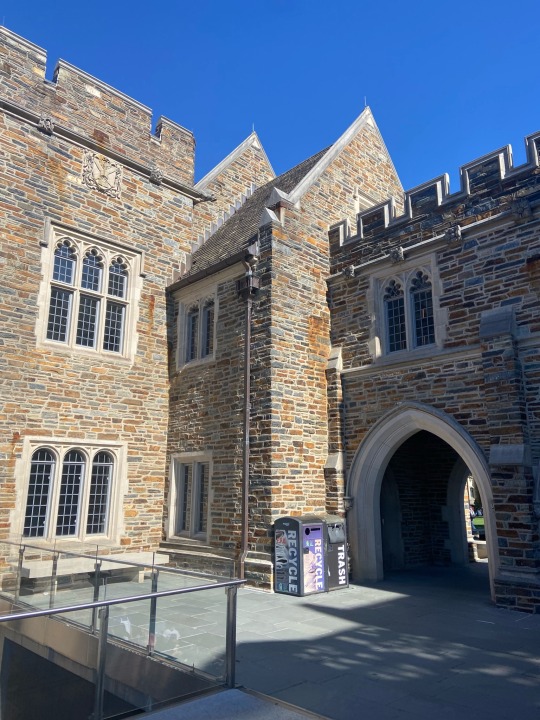
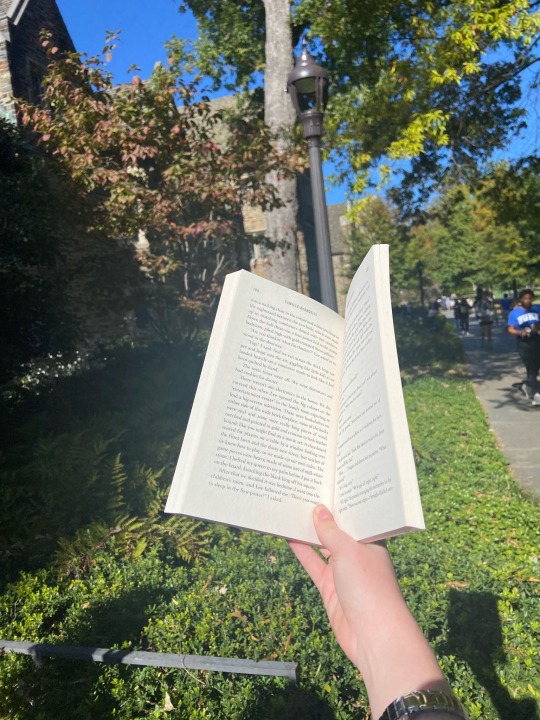

Tuesday, October 25th
An interesting thing I learned today in my Modernist American lit class. We discussed the famous poem by William Carlos Williams, about the red wheelbarrow:
so much depends
upon
a red wheel
barrow
glazed with rain
water
beside the white
chickens
My professor noted that the context of the poem is frequently omitted because of Williams’ association with the imagist movement, but that Williams wrote that he was inspired to write the poem about an African American farmer’s red wheelbarrow. It made me reconsider the poem, especially the first and last clauses. My class debated whether the poem should be read with that context or not, and whether or not it changes the meaning. I think it does.
That’s the last of my literature studying today, as I have two problem sets to obsess over.
#studyblr#student#annotation#booklover#college#annotating books#classic literature#study blog#dark academia#studyspo#classics#university#fall vibes#fall aesthetic
14 notes
·
View notes